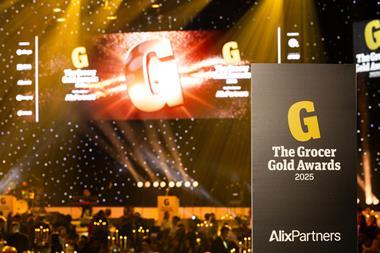Waitrose’s announcement today about its multi-year Uber Eats deal is not that significant. Nowadays such deals seemingly come as often as takeaway drivers did during the pandemic lockdowns.
The real interest lies in whether it’s the right time, and what was behind the decision for the tie-up.
A handful of similar announcements from this year include Asda’s launch of Deliveroo Hop at an Express store in Tottenham Hale; Iceland’s partnership with Just Eat in March; followed Sainsbury’s own launch with the takeaway giant two months earlier – which was its third such tie-up on top of existing partnerships with Deliveroo and Uber Eats nationwide.
That was all in addition to an insulated bag-load of extensions, savings campaigns and dark kitchen deals announced between grocers and major delivery players over the past few months.
What was, pre-pandemic, a novel ‘nice to have’, has become as common as click & collect and self-service checkouts, with pretty much every major supermarket now working with a major partner or even multiple delivery giants.
One could even argue that Waitrose, in previously only having one partnership with Deliveroo – which it didn’t significantly begin rolling out until 2021 – was a little late to the game.
Waitrose already has experience with a Deliveroo tie-up
Significant or not, the tie-up definitely makes sense. If you can join them, why wouldn’t you?
The standard model for grocery partnerships is that the delivery platform employs and pays for the couriers, earning a delivery fee on top of a commission on the order. In return, supermarkets, who already operate click & collect services across most stores, get access to extra revenue, for not much more – or in some cases perhaps even less – than the labour cost of a standard click & collect order.
Waitrose already has experience in operating with a third-party delivery partner through its tie-up with Deliveroo, meaning the new service can be rolled out quickly based on where Uber Eats has riders and market share.
Uber Eats will initially go live in five of Waitrose’s London stores, with the aim of rolling out to more than 200 by the end of August.
If that target is reached it will nearly match the 222 Waitrose stores launched on Deliveroo in the space of a few months, whereas it took two years previously.
Executive director James Bailey has been vocal about plans to build its presence in the convenience sector, and sees third party partnerships like those with Uber Eats, in addition to tie-ups with the likes of Shell, Dobbies garden centres and through supply partnerships with convenience chains like Margiotta, as key to success.
The business has also been working to grow its share among younger shoppers. Given that it credits younger shoppers as primarily being behind a 40% growth in on-demand grocery orders over the past year, it clearly sees this as one way to win them.
Looming threats to deliveries long-term success
Uber Eats would claim that a near 60% increase in gross bookings from supermarkets during the first quarter of this year compared with last is evidence it can help Waitrose reach them.
Bubbles, however, can always burst. There are looming threats to the long-term success of the delivery platforms in the grocery sector. Not least from the supermarkets themselves.
Aldi ended its partnership with Deliveroo in January 2022 after seeing a resurgence of footfall in stores in the wake of the pandemic. Others, like Tesco, with Whoosh, and Ocado, with Zoom, are working to scale their own in-house, rapid delivery services.
With food inflation and the wider cost of living crisis making customers ever more cost-conscious, how many are going to want to pay a significant premium for the same products they could get in store?
There are potholes ahead, but the long-term viability of the delivery platforms is not really Waitrose’s, or any other supermarket’s problem. While they can, they will ride the wave.




















No comments yet